Content
She has owned Check Yourself, a bookkeeping and payroll service that specializes in small business, for over twenty years. She holds a Bachelor’s degree from UCLA and has served on the Board of the National Association of Women Business Owners. She also regularly writes about travel, food, and books for various lifestyle publications. In the above entry, inventory is adjusted downward by $1,250 for shrinkage, and the COGS is increased for the shrinkage. Tim is a Certified QuickBooks Time Pro, QuickBooks ProAdvisor, and CPA with 25 years of experience. He brings his expertise to Fit Small Business’s accounting content.
Regardless of the account, the debit is always on the left-hand side of the t-chart, and the credit is always on the right-hand side of the t-chart. A physical inventory is a method of manually counting your inventory and comparing it against recorded numbers. This count is usually performed at the end of the reporting period.
When to Record COGS
The cost of goods sold is measured according to the prior inventory purchased rather than the recent one. DateAccountDebitCreditXX/XX/XXXXCOGS20,000Inventory20,000Debit your COGS account and credit your Inventory account to show your cost of goods sold for the period. This is the total amount spent for the products you placed in your inventory for selling purposes.
A Small Business Guide to Cost Recovery – The Motley Fool
A Small Business Guide to Cost Recovery.
Posted: Wed, 18 May 2022 07:00:00 GMT [source]
You only record COGS at the end of an accounting period to show inventory sold. It’s important to know how to record COGS in your books to accurately calculate profits. The FIFO method of inventory valuation is based on the assumption that the sale or usage of goods follows the same order in which they’re purchased. Under this method, the earliest purchased or produced goods are sold first. Therefore, the products in inventory at the end of the year are the ones that were purchased most recently. To find the average cost per unit, take the total cost for all of the units, $11,500, and divide it by the total number of units, 1,000. Therefore, the remaining 25 units of inventory are valued at $11.20 each, for a total of $287.50.
Accounting for Cost of Goods Sold
You should record the cost of goods sold as a business expense on your income statement. On most income statements, cost of goods sold appears beneath sales revenue and before gross profits. You can determine net income by subtracting expenses from revenues.
When that inventory is sold, it becomes an Expense, and we call that expense the Cost of goods sold. Calculating cost of goods sold is necessary for any small business. By following the steps above, you’ll be able to determine the best method for you. With a perpetual inventory system, your ending inventory and cost of goods sold should theoretically be correct without any adjustment. However, in reality, inventory shrinkage occurs, and you’ll need to adjust the ending inventory from your perpetual system to the amount you calculated in step 2. This is the cost of materials and supplies needed to manufacture your product.
Determine Cost to Assign to the Quantity on Hand
Likewise, if two companies use different inventory systems, they will have different journal entries for the cost of goods sold. When the textbook is sold, the bookstore removes the cost of $85 from its inventory and reports journal entry cost of goods sold the $85 as the cost of goods sold on the income statement that reports the sale of the textbook. Specific identification is special in that this is only used by organizations with specifically identifiable inventory.
Cost of goods sold is neither calculated nor recorded when a sale occurs. Thus, the inventory balance remains unadjusted throughout the year. Eventually, whenever financial statements are prepared, the amount to be reported for the asset must be determined along with the expense for https://business-accounting.net/ the entire period. Be sure to accrue purchases at the end of the accounting period if goods have been received but not the related supplier invoice. Job order cost flow, or job costing, is used when products or services are unique and costs can be attributed to an individual job.
How to Create a Cost of Goods Sold Journal Entry
Thus, the business’s cost of goods sold will be higher because the products cost more to make. LIFO also assumes a lower profit margin on sold items and a lower net income for inventory.
In practice, however, companies often don’t know exactly which units of inventory were sold. Instead, they rely on accounting methods such as the first in, first out and last in, first out rules to estimate what value of inventory was actually sold in the period. If the inventory value included in COGS is relatively high, then this will place downward pressure on the company’s gross profit.
3 The Calculation of Cost of Goods Sold
In these cases, the IRS recommends either FIFO or LIFO costing methods. According to the IRS, companies that make and sell products or buy and resell goods need to calculate COGS to write off the expense. Last in, first out is a method used to account for inventory that records the most recently produced items as sold first. COGS differs from operating expenses in that OPEX includes expenditures that are not directly tied to the production of goods or services. To record the cost of goods sold, we need to find its value before we process a journal entry. This can be a complicated process, since the accountant may use a variety of cost layering systems, such as FIFO, LIFO, or the weighted average method to determine cost.
How do you record cost of goods sold on a trial balance?
COGS = (Opening Inventory + Purchases + Direct Expenses) – Closing Inventory. The direct expenses in the equation include all the costs directly attached to the sale of a product.
If the transactions are created after the ship date, it will use the journal transaction effective date. To allocate additional costs to products on a purchase order, make sure that the additional cost account is the same as the inventory account for the products. If you are using the FIFO method, the first goods you will sell are the ones you produced or purchased first. This means that you will first sell your least expensive inventories. Operating expenses, also known as OPEX, are costs which companies incur during daily business activities to keep the business functioning.
Company
The specific identification method is used to track individual items of inventory. This method is applicable when individual items can be identified clearly, such as with a serial number on boats, cars, or large pieces of equipment. This method creates a high degree of accuracy in the cost of inventory since the exact cost of items in ending inventory can be recorded. However, specific identification isn’t practical when a large number of indistinguishable items are purchased, like the widgets in our example above. The COGS is a debit item because it is a expense and one of the rules of accounting states that all expenses must be debited. Expenses are costs incurred by a business during normal operations.

